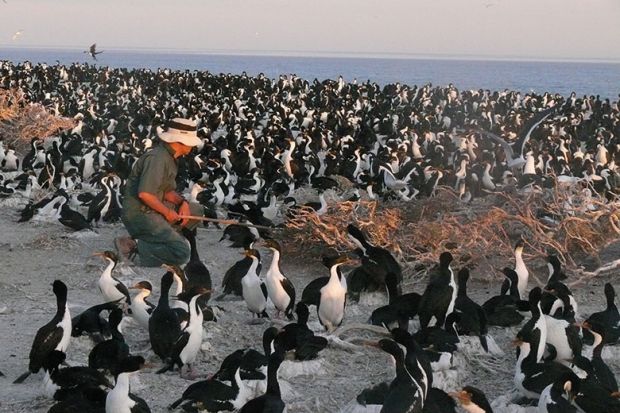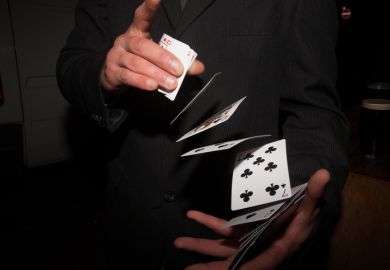It takes a certain temperament to spend a year alone on a remote island studying penguins.
Like many of the people Times Higher Education has profiled in our Outer Limits series – articles devoted to “academia outside the comfort zone” – Rory Wilson has led a life that probably wouldn’t appeal to most of us. And yet, as he makes clear in my recent feature, his work is eminently worthy of celebration, since it has not only been a source of fun for him but it's made a major contribution to conservation efforts.
If a species such as the African penguin is in imminent danger of extinction, it is vital that we know as much as possible about where individuals go to breed and feed.
Wilson, now professor of aquatic biology and sustainable aquaculture at Swansea University, started off in the 1980s by creating the most rudimentary kind of tracking device, cobbled together with a syringe, a spring, a polyurethane bung and a piece of X-ray film. He has since been a crucial figure in developing ever more sophisticated devices for recording animal behaviour in finer and finer detail.
This can be vital for conservation work, but it also enables us to look at our fellow creatures in completely new ways. We can use the vast amounts of data generated by trackers to create animations on Google Earth showing the exact movements of an animal.
And just as we can generally guess the emotional state of other people by the way that they walk, argues one of Wilson’s papers, analysis of “micromovements” can provide evidence for “the diagnosis of subclinical illnesses” that are otherwise very hard to detect.
Perhaps unsurprisingly, since a man can’t devote his whole life to penguins, Wilson’s work on improving the technology of tracking has also seen him turn his attention to some very different species, from albatrosses to sloths.
And it is here that he faced some startling challenges, he told me, around “how to get tagging technology on to animals that are, for example, large, fierce, dangerous or virtually impossible to catch, and how to get the data back once the animal has been tagged”. Those who want to hear more about his amusing and sometimes hair-raising adventures will have to read the full article. They will also learn how working with penguins can teach an important life lesson about how (literally) not to get crapped on.
Matthew Reisz is a reporter and books editor at Times Higher Education.
Register to continue
Why register?
- Registration is free and only takes a moment
- Once registered, you can read 3 articles a month
- Sign up for our newsletter
Subscribe
Or subscribe for unlimited access to:
- Unlimited access to news, views, insights & reviews
- Digital editions
- Digital access to THE’s university and college rankings analysis
Already registered or a current subscriber?








